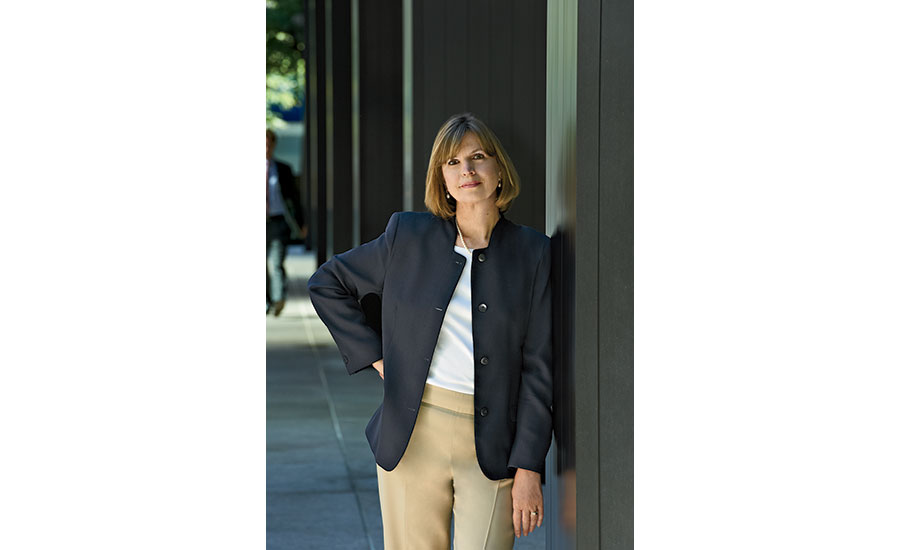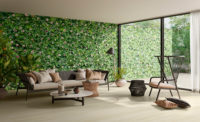When I was small, around 9 or 10 years old, my mother took me to see a house in our neighborhood in Ann Arbor designed by Frank Lloyd Wright. She was friends with the Palmers, who had commissioned the house from the architect in 1950—and it remained in the family for more than half a century. The brick and red cypress structure was beautifully tucked into a wooded rise, so it was hard to see the entire house from the road—its low-slung forms, with a deeply overhanging roof, were revealed as you walked toward it, crunching on the pulverized brick that Wright had specified for the driveway. The house, of course, was dramatically different from the split-level colonial we lived in nearby: inside, the open living room, dominated by wood, exuded a cozy warmth, with windows overlooking the leafy garden. As the guiding motif was the equilateral triangle, there were virtually no 90-degree angles in the place, and that included much of the Wrightdesigned furniture. The dining room table was rhomboid, and even the beds in the modest-sized bedrooms weren’t rectangular. When we left, the first question I asked my mother was how Mrs. Palmer could possibly find sheets that fit.
My design queries have become a little more on point since then, but I learned to expect the unexpected in houses by great architects. Some turn out to be surprisingly small: Philip Johnson’s Glass House in New Canaan, Connecticut, for example, or the Margaret Esherick House in Chestnut Hill, Pennsylvania, by Louis Kahn (one bedroom! tiny kitchen!). Others are embedded with drama. The stunning modernist home in Pacific Palisades, California, that Ray Kappe designed for his family in the 1960s is a light-filled flow of spaces that spill over multiple levels— many open to each other, without railings. Of course, even more vertigo-inducing is Paul Rudolph’s extravagant penthouse on Beekman Place in Manhattan, with a total of 27 different levels, some barely bigger than a stair landing, carved out of a converted townhouse by the architect, beginning in the 1970s.
You have to experience such extraordinary dwellings in person, which is why RECORD, as usual, dispatched writers who went from Santiago to Seattle to report on the projects included in this month’s issue, our annual collection of Record Houses.
One of them has an echo of Wright’s Palmer house. Shigeru Ban’s live/ work dwelling for a client in Tokyo is also based on the triangle—from the shape of the lot to the triangular roof, with exquisitely detailed triangular motifs in ceilings made of both wood and concrete (page 80). For the Pritzker Prize–winner, known for humanitarian projects as well as museums and other building types, tackling residential architecture is a testing ground for new ideas.
A trend seen in several houses in the pages ahead is the design of clustered volumes, an effective device for breaking up mass and separating programmatic components. For Underhill House, a family residence on Long Island by Bates Masi Architects, a collection of mostly one-story shingled structures, planned around courtyards, reduces the impact of its 6,300 square feet, helping it to fit sympathetically into the surrounding village. A weekend getaway in northern California by Envelope A+D is significantly smaller (2,100 square feet) but similarly sensitive to its neighborhood—in this case, a forest. It was carefully constructed as a series of cabins on stilts, so that not a single tree had to be cut down during construction. On the island of Mallorca, a house by OHLAB for an older couple was designed as a loose assemblage of four connected boxes—cozy for the clients when they are alone but expansive when grandchildren come to visit.
These residences of scaled-down volumes are, in a way, in disguise— but no house is more enigmatic than Jakob + MacFarlane’s Connected House: it sits like a deconstructed silo in a suburb of Paris and holds its secrets close to its chest. When deputy editor Suzanne Stephens (who oversaw this issue) visited it, she was astonished at how large the house turned out to be—and how the play of compressed and expanded spaces within a metal structure of planes and tubes made her feel as if she were inside a futuristic bird’s nest. The experience of being there is everything.





